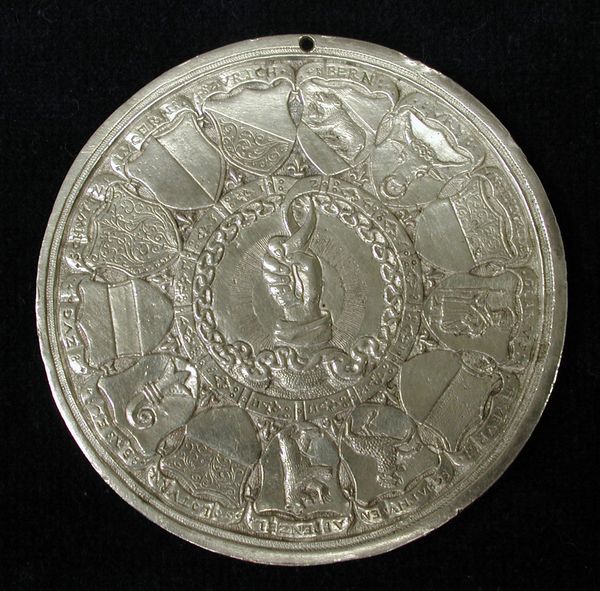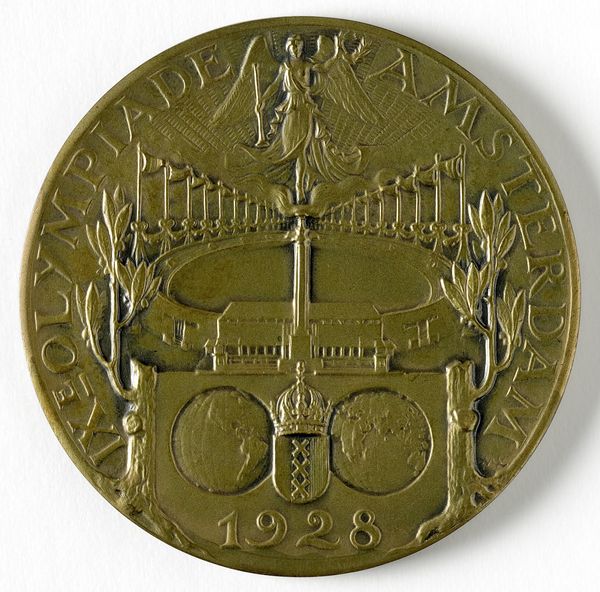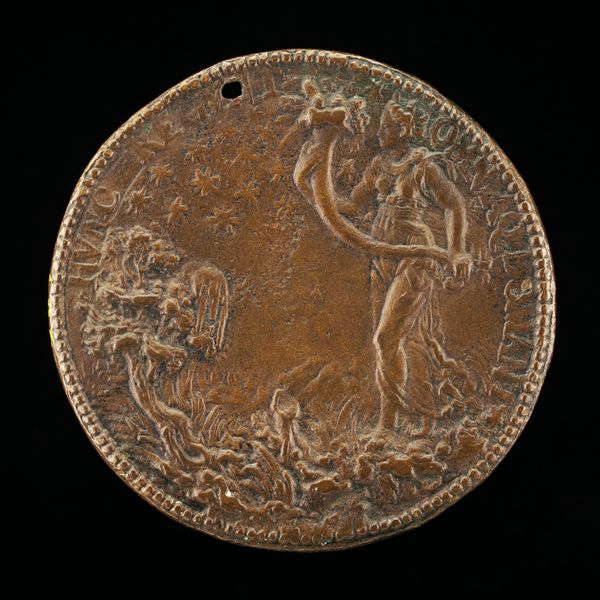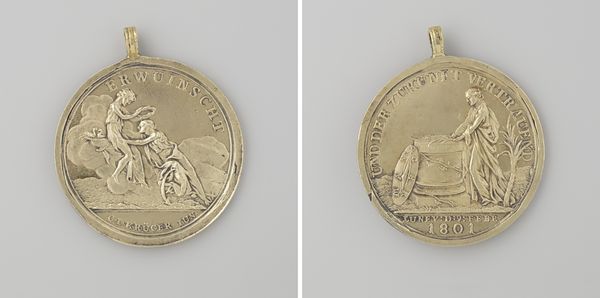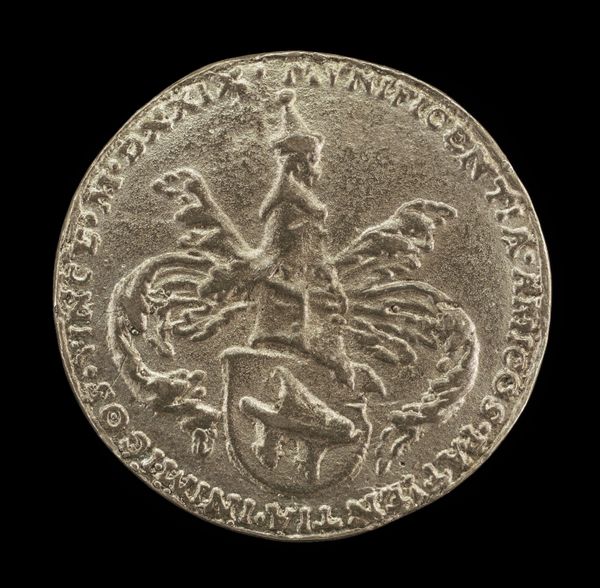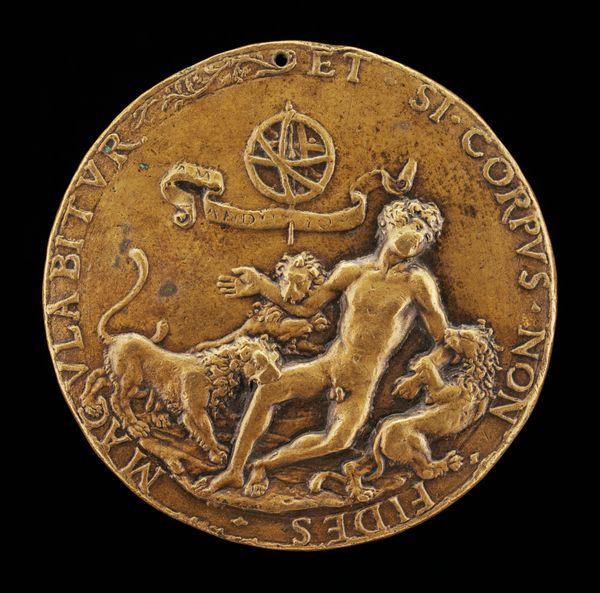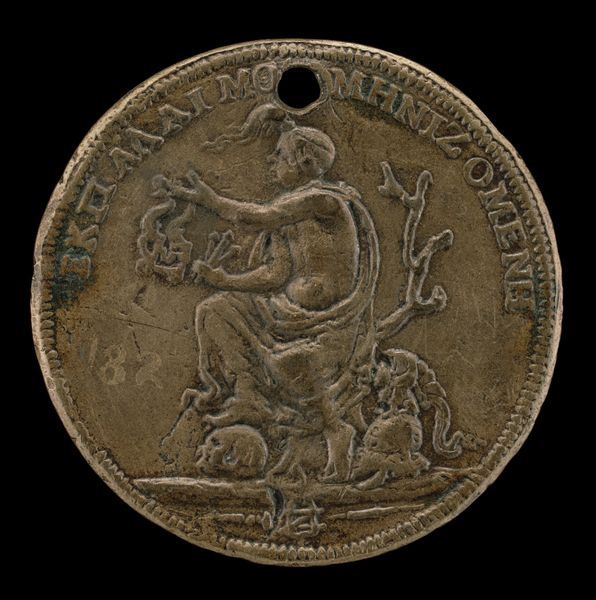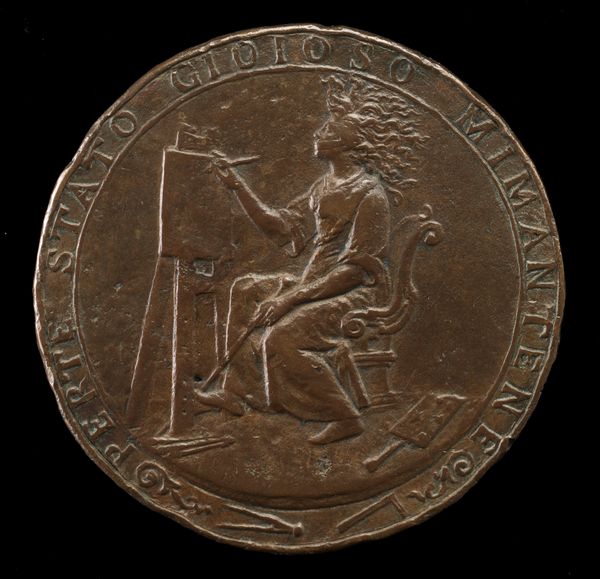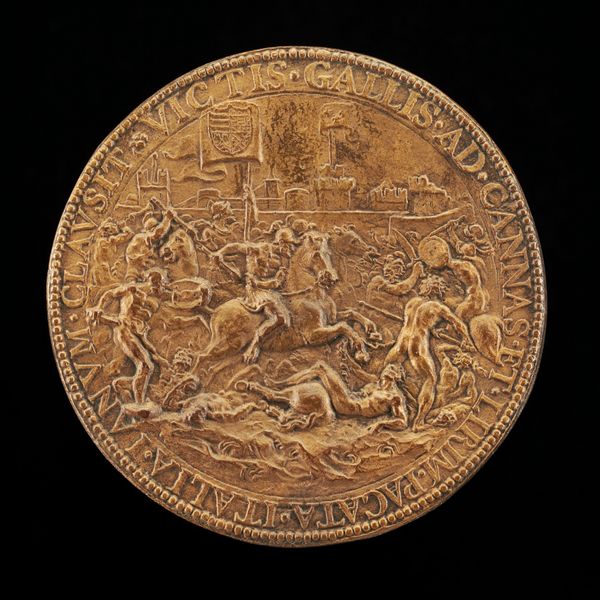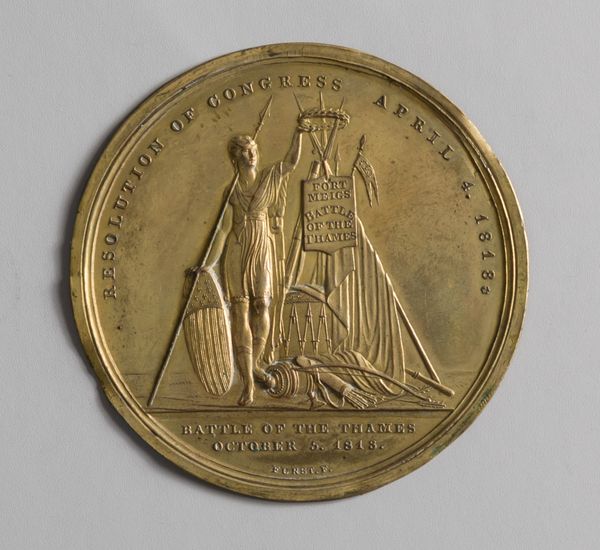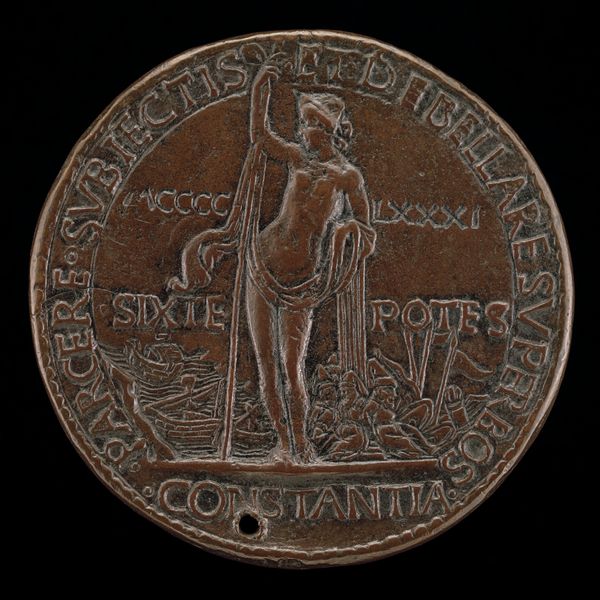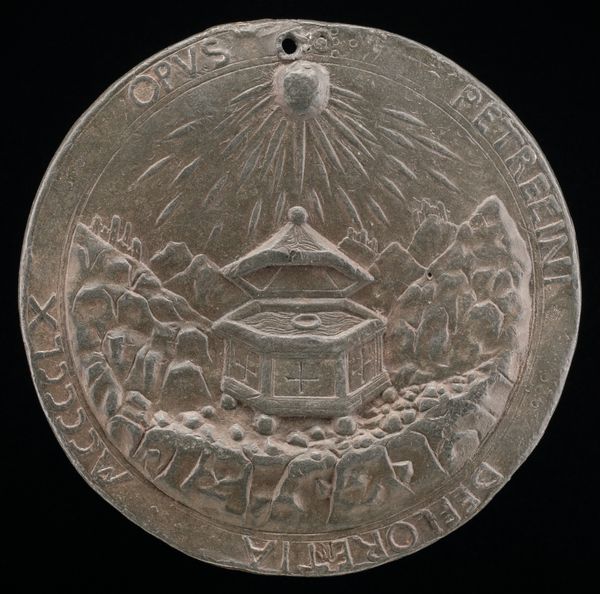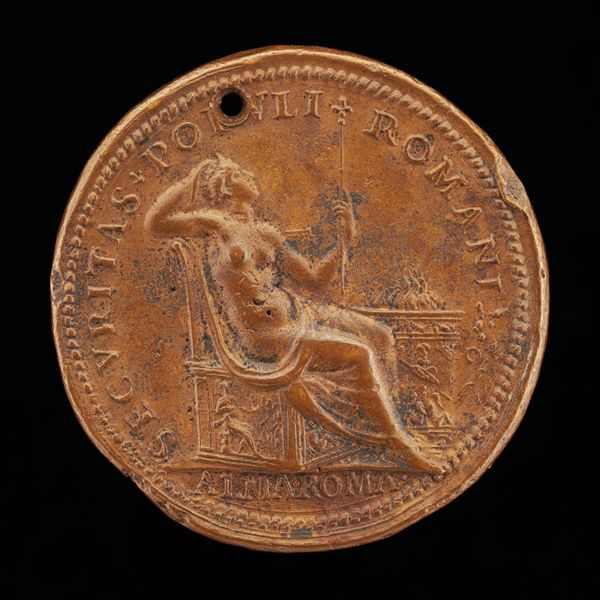
relief, bronze, sculpture
#
dutch-golden-age
#
relief
#
bronze
#
geometric
#
sculpture
Dimensions: diameter 6 cm, weight 80.80 gr
Copyright: Rijks Museum: Open Domain
Editor: This is "The Impoldering of Walcheren after the Second World War," a bronze relief sculpture by Albert Diekerhof, created in 1946. It's a compelling medal, seemingly celebrating a return to order, yet it evokes a strong sense of the conflict and the immense effort required to reclaim the land. What do you see in this piece? Curator: I see a potent commentary on resilience and reconstruction in the wake of immense trauma. Beyond the celebration, this medal speaks to the fraught relationship between humanity and nature, particularly in a landscape scarred by war. The impoldering represents not just physical repair, but a symbolic reclaiming of identity and sovereignty after occupation. Editor: The dolphin seems like an unusual symbol for something like this? Curator: Indeed. The dolphin, often associated with hope and guidance, here might be interpreted as a poignant symbol. Consider its position in a space of devastation – is it guiding towards recovery, or lamenting what has been lost? Moreover, the explicit reference to Europe evokes larger questions of collective identity and responsibility. How does the "impoldering" serve as a metaphor for broader European reconstruction? Editor: That's a really interesting point, thinking of this specific, local act of land reclamation as representing this whole process for Europe. Is the dolphin just a general symbol of the sea, or is there some other aspect I'm missing? Curator: I'd say it's both. The literal connection to the sea is undeniable, given the subject matter. But consider its classical associations, its links to rebirth and transformation. Think about how often marginalized communities look to mythological figures for strength. Do you think it's significant who was commissioning art like this? Editor: I see your point. It highlights how even celebratory art can carry deeper, more complex meanings related to identity and cultural memory. Curator: Exactly! It prompts us to question whose narratives are being prioritized, and how power dynamics influence historical representations.
Comments
rijksmuseum about 2 years ago
⋮
Flood Disaster Medals. Much of the Netherlands lies below sea level. The threat of flooding is thus ever-present. Dikes, dams and polders were created to control the water. Still, these safety measures sometimes failed. Each century witnessed disastrous floods, with levees breaching and the countryside being inundated. The North Sea Flood of 1953 led to the construction of the Delta Works. Thanks to this major intervention the country has since remained dry.
Join the conversation
Join millions of artists and users on Artera today and experience the ultimate creative platform.
